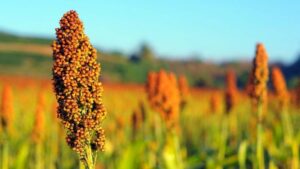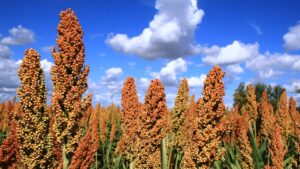An ancestral grain discovered on the African continent, sorghum cultivation is beginning to expand in many countries in response to the need for rotation and to climate change. Plots of this white or red grain can be seen flourishing between fields of corn and other field crops. But beyond a simple question of colour, what are the major differences between these two types of grain sorghum? Which is more widely produced in Europe, and why?
Europe’s sorghum acreage
In 2022, on a global scale, the area cultivated with grain sorghum represented around 40 million hectares and remained stable. According to Sorghum-ID indicators, grain sorghum is grown on 183,000 hectares in Europe, with the area under cultivation remaining stable or even increasing slightly. On this European acreage, white grain sorghum and red grain sorghum are in the same league, each occupying around 50 per cent of the dedicated area.
Disparities between different European countries
It’s true that some European countries have a preference for one grain or the other. Red grain sorghum is grown mainly in France, Romania, Austria, Bulgaria and Hungary. Countries such as Italy and Russia prefer white grain sorghum. Ukraine is a special case on the European continent, producing both white and red grain sorghum, in equal proportions.
Agronomic differences
There’s no scientific explanation for this disparity. White and red grain sorghum are in the same league and offer the same advantages. For example, in terms of agronomic performance, there’s no difference between the two colours in relation to yield, disease tolerance, initial vigour or lodging behaviour. The same applies to mycotoxin risks. In fact, one of sorghum’s strengths is its very low risk regarding mycotoxins. In pig production using sorghum, multi-annual data over 5 years show values below the risk thresholds for DON (Vomitoxin), Zearalenone, Aflatoxin, Fumonisin and T2+HT2. There are very small differences in quality between the two colours of grain sorghum, in terms of protein or starch content, fatty acids, cellulose, minerals and vitamins, etc. Another advantage of sorghum is its low tannin content, which is below the thresholds authorised for registration in European catalogues. And here again, the difference between white and red grain is tiny.
Different outlets for sorghum
White and red grain sorghums can be used for the same outlets. Grain sorghum can have a wide range of outlets: animal feed (pigs, poultry, cattle, fish, birds, pets), human food (flour, pasta, porridge, beer, spirits, vegetable drinks, etc.) or bioethanol (automotive, aviation or pharmaceutical industries). So, we have to conclude that the colour of the sorghum grain grown is simply a matter of subjective preference. At Lidea, the range of sorghum grain colours is broad, as our portfolio offers processors numerous colour gradients, from dark red to salmon-coloured, cream or milky white. Our aim: to cater to the customs of each country.









